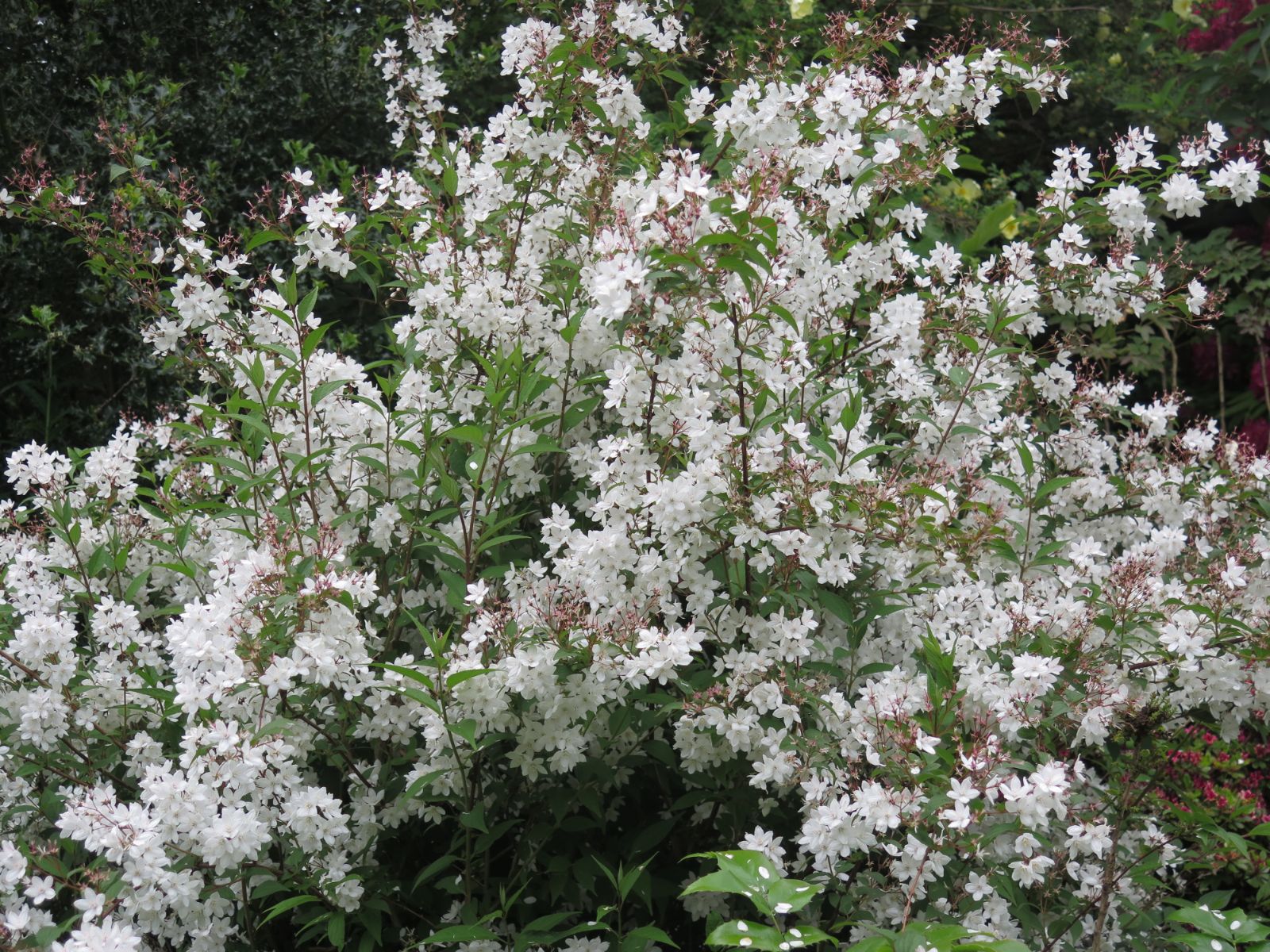Deutzia rubens
Credits
Article from Bean's Trees and Shrubs Hardy in the British Isles
Recommended citation
'Deutzia rubens' from the website Trees and Shrubs Online (treesandshrubsonline.
Genus
Synonyms
- D. hypoglauca Rehd.
Other taxa in genus
- Deutzia amurensis
- Deutzia compacta
- Deutzia corymbosa
- Deutzia discolor
- Deutzia × elegantissima
- Deutzia glomeruliflora
- Deutzia gracilis
- Deutzia grandiflora
- Deutzia × hybrida
- Deutzia × lemoinei
- Deutzia longifolia
- Deutzia × magnifica
- Deutzia maximowicziana
- Deutzia mollis
- Deutzia monbeigii
- Deutzia pulchra
- Deutzia purpurascens
- Deutzia reflexa
- Deutzia rehderana
- Deutzia × rosea
- Deutzia scabra
- Deutzia schneiderana
- Deutzia setchuenensis
- Deutzia sieboldiana
- Deutzia staminea
- Deutzia taiwanensis
- Deutzia vilmoriniae
- Deutzia wilsonii
A deciduous shrub of vigorous growth about 6 ft high, with erect, much-branched stems; young shoots glabrous, with reddish-brown bark that peels off the second year, leaving the branches grey. Leaves ovate to ovate-lanceolate, finely toothed, rounded or broadly wedge-shaped at the base, abruptly or slenderly pointed, 11⁄2 to 3 in. long, 1⁄2 to 11⁄4 in. wide, green and sprinkled with mostly four-rayed (sometimes three-rayed) hairs above, undersurface often glaucous and covered very sparsely to fairly densely with three- to six-rayed hairs; chief veins four to six each side the midrib; stalk 1⁄8 in. long. Inflorescence a rounded cluster of white blossom 3 or 4 in. wide; petals obovate, imbricate in bud; calyx 1⁄8 in. long, sprinkled with minute starry down, cup-shaped at the base, with five triangular lobes; flower-stalks glabrous. The winged, petal-like stalks of the stamens are erect and form a kind of tube in the centre of the flower, the bright yellow anthers being set in a notch at the top. Bot. Mag. t. 9362.
Native of Hupeh and Shensi, China; discovered by Wilson in 1901; introduced by W. Purdom in 1910. It is a distinct and beautiful species and is perfectly hardy in this country. It blooms in June.
From the Supplement (Vol. V)
D. hypoglauca is recognised by Zaikonnikova as a species distinct from D. rubens. The reasons for reducing it to synonymy are given by Mr Airy Shaw in the article accompanying Bot. Mag., t.9362.


